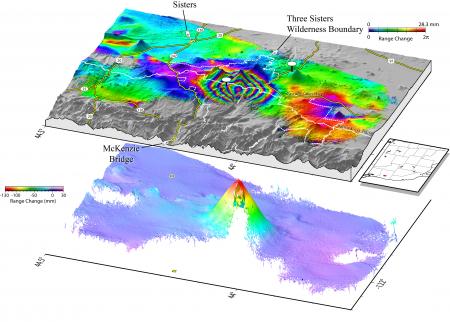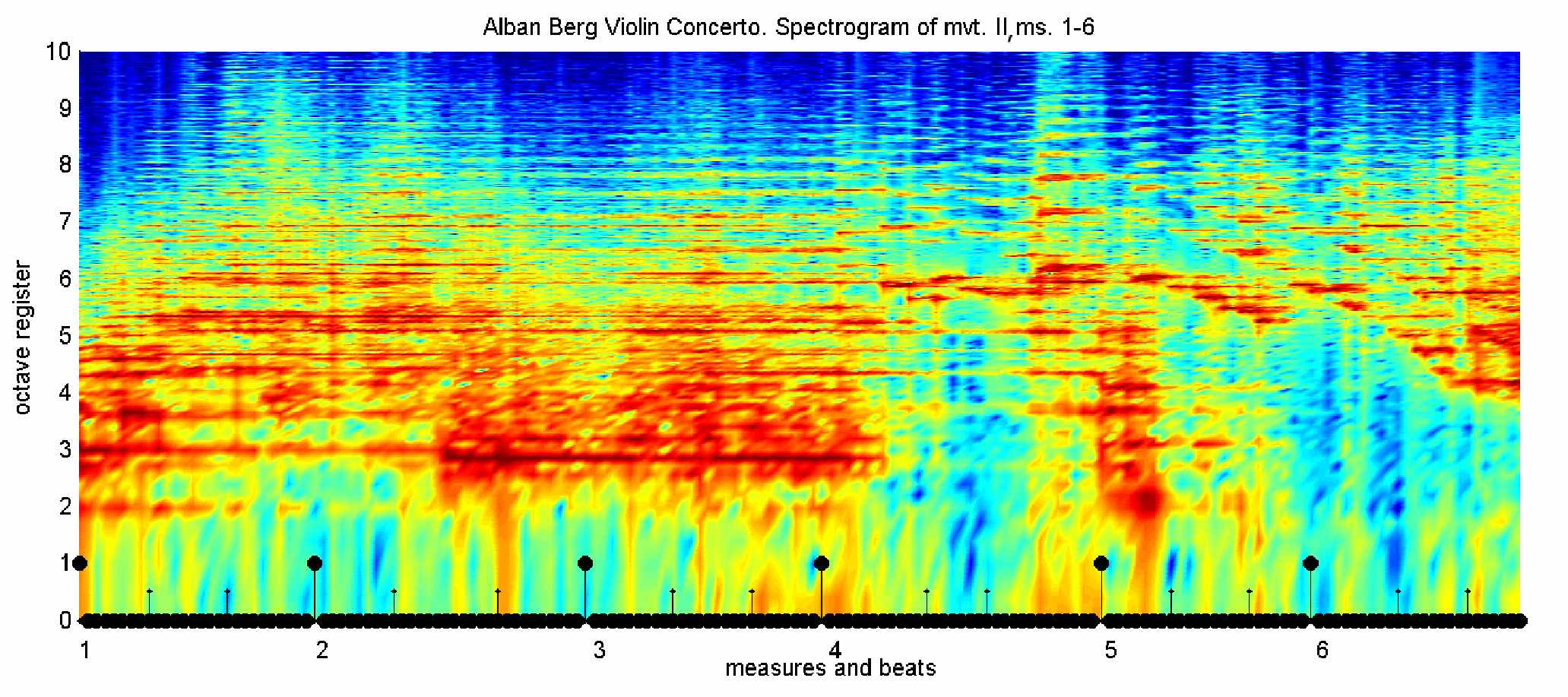In my last post, I laid out the reasons behind my recent decision to leave my PhD at the Colorado School of Mines in search of a PhD where I can do research that will truly make my heart sing. As promised, this post will be an update on this transition.
Now that I've made the decision to leave, now I have to make the equally hard, and in some ways scarier, decision about where to go. Scarier, because I want to get it right this time! It's hard to admit to myself, but I realize now I probably didn't do enough research and soul-searching when I chose the PhD program at Mines. On the other hand, to be fair to myself, I legitimately didn't realize just how strong an aversion I would feel to working on oil and gas problems, and how intensely I would miss volcanology. However, that is all in the past now, so this time I'm determined to get it right, or at least to make a more informed decision.
A large part of this is figuring out just exactly what part of "real data science" excites me, because in the world of academia just saying "I want to go poke volcanoes!" isn't nearly specific enough. Some things are easy - I know that geochemistry, for instance, makes me want to cry in a dark corner with a blanket over my head. So some sort of geophysics.... but what?? I've realized that my old formula of "gravity+volcanology" is far too narrow a subfield to help me in my current quest. I'd also like to add to my toolbox of volcanology, and there are some pretty neat tools out there I could play with.
The first tool that caught my imagination was deformation. When I say deformation, I mean measuring small changes in the position of the earth's surface, by either ground or space-based methods. A really famous example is the bulge that formed on the north side of Mt. St. Helens prior to its 1980 eruption. More recently, scientists used InSAR to track inflation of the Three Sisters volcano in Oregon.
 |
| Recent deformation on Three Sisters volcano in Oregon, measured with InSAR. Pretty pretty rainbows. |
\begin{volcanology_geek_time}
Here's a really cool video of Mt. Etna in Italy deforming! Mt. Etna is one of my all-time favorite volcanoes because the Italian volcanologists have done all sorts of cool gravity work on the volcano. Many of the papers written on the gravity measurements at Etna were among the first real scientific papers I read as an undergrad, so Etna holds a special place in my volcano heart.
\end{volcanology_geek_time}
Deformation and gravity work well together because while deformation can do a really good job of giving the "where" and "how much" of volcanic activity, gravity gives insight on the "what". I'm pretty well versed in gravity at this point, so I'm thinking it might be cool to see what I can do with deformation, maybe even mix the two together with joint inversion shenanigans.
In addition, there's the tempting fact that there's a lot more places in the world where you can do deformation work. Currently, satellite based gravity measurements don't have a high enough resolution to be useful for volcanology. However, InSAR satellite measurements can measure centimeter scale deformation on volcanoes. So, suddenly, there's a lot more volcanoes I can poke at now....
Going a bit further away from gravity, I've also explored seismology a bit. In a way, I've already been doing seismology-lite, in working with continuous gravity data. Many of the techniques I use for looking at this gravity data are drawn from seismology, and it's one of my favorite parts of my job.
Because it's me and I like weird stuff, I'm interested in weird seismology. This means weird sources (landslides, glaciers, etc.) and weird signals (low frequency, etc.). This is definitely a field I know much less about, and I'm a little hesitant about getting into seismology, simply because it's so big a field. So much so that the average person generally doesn't seem to know that geophysics beyond seismology even exists, grrr. I do admit to a certain feeling that I am betraying "my people" by considering seismology.....
Nonetheless, I have to admit the seismologists have some really cool toys. I've always been fascinated by spectrograms, for instance. And after working in gravity, where the sparsity of most data sets (in academia, anyway) generally precludes some of the fancier processing wizardry, data collected at frequencies greater that 1 Hz is down-right drool-worthy. Throwing math at data to get answers has always been one of my favorite parts of physics, and there's just so much data in seismology!
Seismology has been pretty tempting, but after internal reflection and a productive conversation with my master's adviser, I've finally decided to focus solely on deformation. Deformation is a smaller field than seismology, and I've observed that I really thrive in the niche or frontier regions of science. This was actually one of my frustrations with research in exploration geophysics - I felt like all the interesting, fundamental problems had already been solved. I feel similarly with seismology. Seismology is such a huge field that I know it would be harder to carve out my little part of it, which is why I was targeting my search for the kinds of "weird" seismology that are more fringe and thus more me. Deformation is not really a new field, but it is certainly much smaller than seismology, so I suspect that will make it easier for me to find an unexplored corner to go get lost in.
There's also the issue of time. While I would not call my two years at Mines wasted, I'm not overly eager to spend much beyond 4 years on my next PhD attempt. This would definitely be a risk if I were to jump into seismology, about which I know only the fringes. By contrast, I'm much more familiar with deformation, and more importantly, I've already been able to dream up a few research ideas. This will be important for hitting the ground running for PhD Round 2!
In addition, there's the tempting fact that there's a lot more places in the world where you can do deformation work. Currently, satellite based gravity measurements don't have a high enough resolution to be useful for volcanology. However, InSAR satellite measurements can measure centimeter scale deformation on volcanoes. So, suddenly, there's a lot more volcanoes I can poke at now....
Going a bit further away from gravity, I've also explored seismology a bit. In a way, I've already been doing seismology-lite, in working with continuous gravity data. Many of the techniques I use for looking at this gravity data are drawn from seismology, and it's one of my favorite parts of my job.
Because it's me and I like weird stuff, I'm interested in weird seismology. This means weird sources (landslides, glaciers, etc.) and weird signals (low frequency, etc.). This is definitely a field I know much less about, and I'm a little hesitant about getting into seismology, simply because it's so big a field. So much so that the average person generally doesn't seem to know that geophysics beyond seismology even exists, grrr. I do admit to a certain feeling that I am betraying "my people" by considering seismology.....
Nonetheless, I have to admit the seismologists have some really cool toys. I've always been fascinated by spectrograms, for instance. And after working in gravity, where the sparsity of most data sets (in academia, anyway) generally precludes some of the fancier processing wizardry, data collected at frequencies greater that 1 Hz is down-right drool-worthy. Throwing math at data to get answers has always been one of my favorite parts of physics, and there's just so much data in seismology!
 |
| Music scores of the future? |
Seismology has been pretty tempting, but after internal reflection and a productive conversation with my master's adviser, I've finally decided to focus solely on deformation. Deformation is a smaller field than seismology, and I've observed that I really thrive in the niche or frontier regions of science. This was actually one of my frustrations with research in exploration geophysics - I felt like all the interesting, fundamental problems had already been solved. I feel similarly with seismology. Seismology is such a huge field that I know it would be harder to carve out my little part of it, which is why I was targeting my search for the kinds of "weird" seismology that are more fringe and thus more me. Deformation is not really a new field, but it is certainly much smaller than seismology, so I suspect that will make it easier for me to find an unexplored corner to go get lost in.
There's also the issue of time. While I would not call my two years at Mines wasted, I'm not overly eager to spend much beyond 4 years on my next PhD attempt. This would definitely be a risk if I were to jump into seismology, about which I know only the fringes. By contrast, I'm much more familiar with deformation, and more importantly, I've already been able to dream up a few research ideas. This will be important for hitting the ground running for PhD Round 2!
It's actually been pretty fun figuring out my research path, and incredibly freeing. After two years of subconsciously trying to fit my research interests into a mold that just wouldn't fit, now I've been able to let my thoughts roam free and settle where they will. Now my daydreams aren't just daydreams - they're research ideas and plans for my future, and that is pretty awesome.
Next up.... will you be my adviser? The search is on!
Previous post: Leaving for Lava
Next posts in this series: